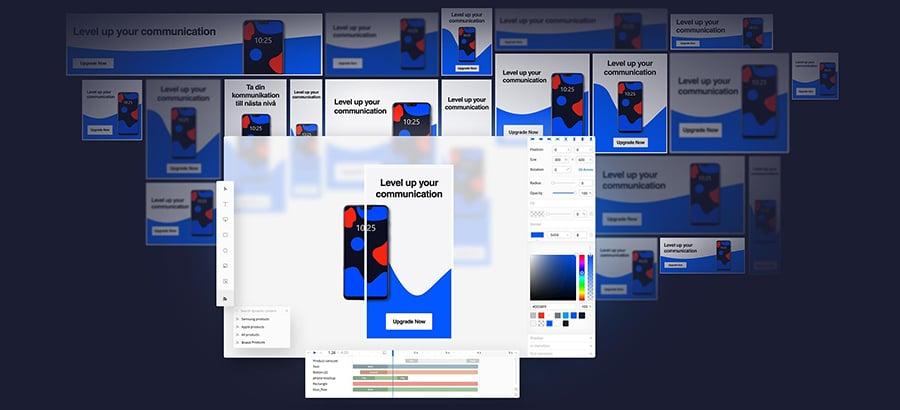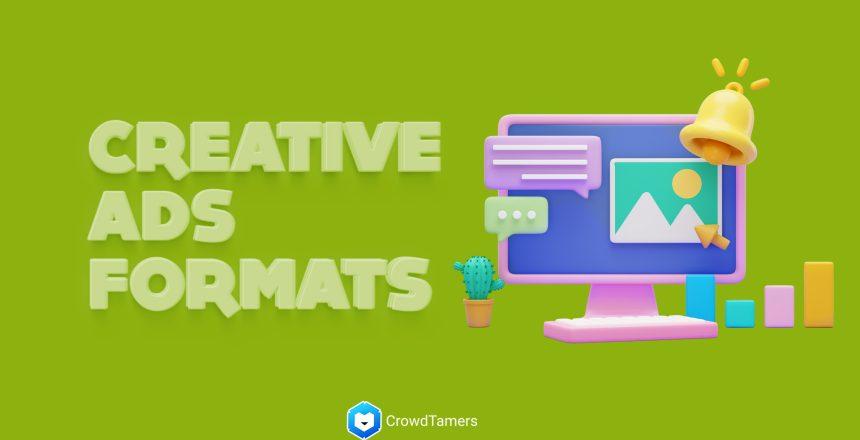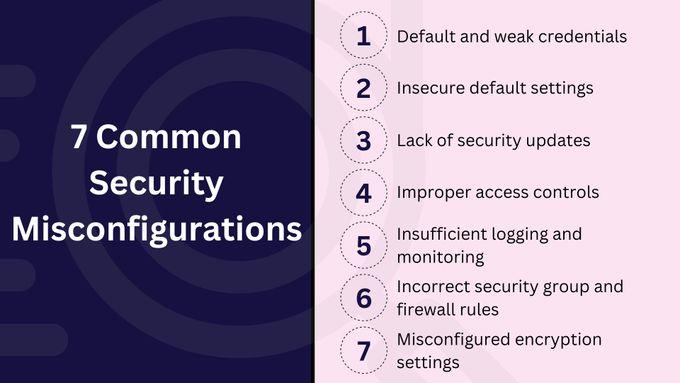The Psychology Behind Banner blindness (and How to Overcome It)
Have you ever scrolled through a website and completely overlooked a banner ad, even though it was right there in front of you? You’re not alone! This phenomenon, known as banner blindness, is a common experience for many internet users. With our daily lives inundated with ads and information overload, our brains have developed a sort of protective mechanism that allows us to filter out what we perceive as distractions. But here’s the kicker: while this might help us focus on what we actually want to see, it can be a significant hurdle for marketers and advertisers trying to get their messages across.
In this article, we’re diving deep into the psychology behind banner blindness—exploring why it happens, what triggers it, and more importantly, how you can overcome it. Weather you’re a marketer looking to optimize your ad strategies or just curious about the quirks of our digital behavior, understanding this concept is crucial. By the end, you’ll not only grasp the science behind why we ignore certain visual cues, but you’ll also walk away with practical tips to make your ads pop and capture attention in an era where distractions are just a click away.Let’s get started!
Understanding Banner Blindness and Its Impact on User Engagement
Banner blindness is a engaging phenomenon that highlights the complexities of user behavior in the digital landscape. Essentially, it refers to the tendency of users to ignore banner-like information on a website, primarily due to the overwhelming amount of visual stimuli they encounter. This behavior poses significant challenges for marketers and designers alike, as it can severely dampen user engagement and conversion rates.
To truly grasp the extent of this issue,it’s crucial to understand the psychological factors at play. Users have developed a learned aversion to ads, often subconsciously filtering out anything that resembles promotional content. This can be attributed to:
- Ad Fatigue: Constant exposure to ads leads users to develop a defensive mechanism, making them less likely to engage with promotional content.
- Visual Clutter: Websites bombarded with various forms of media can overwhelm users, causing them to overlook banners altogether.
- Negative past Experiences: If users have previously encountered deceptive or irrelevant ads, they are less likely to trust any future banners.
To combat banner blindness, it’s essential to employ strategies that redesign how users interact with advertisements. Consider the following tactics:
- Integrate Ads Naturally: Blend ads into the content organically so they feel like a part of the user experience rather than an interruption.
- Create Valuable Content: Focus on providing content that is relevant and useful to users,making your banners feel more like valuable resources than mere advertisements.
- Leverage Eye-Catching Design: Use unique visuals and compelling copy that stand out without being overly flashy or intrusive.
Moreover, analyzing user behavior is basic. A/B testing various banner designs and placements can yield insights into what truly resonates with your audience.The table below summarizes key metrics to monitor for optimizing banner effectiveness:
| Metric | Description | Ideal Benchmark |
|---|---|---|
| Click-Through Rate (CTR) | The percentage of users who click on your banner ad. | 2%+ |
| Conversion Rate | The percentage of users who take a desired action after clicking. | 5%+ |
| Engagement Rate | the interaction level with your ad, such as likes or shares. | 10%+ |
by understanding the roots of banner blindness and implementing thoughtful strategies to overcome it, brands can enhance user engagement and foster more meaningful interactions.This approach not only improves click rates but also transforms user perceptions,turning banners from annoying distractions into valuable components of the online experience.
The Science of Attention: Why We Ignore Banner Ads
In a world overflowing with digital content, it’s no surprise that our brains have developed a filtering system to manage the overwhelming influx of information. This phenomenon, often referred to as *banner blindness*, occurs when users consciously or subconsciously ignore web content that appears to be advertisements. This behavior is not just a matter of choice; it’s a survival tactic shaped by our experiences online. when we recognize a pattern, our brain optimizes for efficiency, leading us to overlook banner ads that we instinctively perceive as irrelevant or intrusive.
Understanding the mechanics of attention is crucial for marketers eager to capture their audience’s interest. Here are some key factors that contribute to why many users tune out banner ads:
- Ad Fatigue: Repeated exposure to similar ads can lead to desensitization, where users grow tired of seeing the same promotional content.
- Design and Placement: Ads that blend into the surrounding content or are poorly designed often go unnoticed. if they don’t stand out in a positive way, they risk being ignored.
- User Experience: A cluttered website with too many distractions can make it difficult for users to focus on ads.The more noise there is, the easier it becomes to overlook promotional messages.
So, what can marketers do to combat banner blindness? Here are some strategies that can help:
- Emphasize Visual Appeal: Create visually striking ads that resonate with your target audience.Use bold colors and clear imagery to draw attention.
- personalization: Tailor ads based on user behavior and preferences. Personalized content is more likely to capture attention and engagement.
- Positioning: Experiment with different placements on the page.Ads positioned within the content—as opposed to the traditional banner at the top—can yield better visibility.
Ultimately, understanding the psychology behind attention and distraction is key to developing effective marketing strategies.By acknowledging why users ignore banner ads, businesses can innovate and adapt their approaches to engage audiences more effectively. This not only enhances the user experience but also boosts the likelihood of conversion in an increasingly crowded digital landscape.
Common Triggers of Banner Blindness in Digital Environments
Understanding the common triggers of banner blindness is essential for crafting effective digital marketing strategies. Many users have developed an instinctive ability to ignore banner ads, often due to specific design and placement elements that make them less noticeable. Let’s delve into these triggers to illuminate the path forward.
Ad Placement is a significant factor. When ads are placed in predictable locations, such as the top or sides of a webpage, users often unconsciously screen them out. This is especially true for content-heavy sites where the user’s focus is directed towards the main content.
Another critical aspect is design consistency. If ads mimic the surrounding content in terms of colors, fonts, and styles, they blend in rather than stand out. users quickly learn to disregard elements that appear similar to the primary content, leading to a phenomenon known as “visual noise.”
- Repetitive Exposure: The more frequently a user sees an ad, the more likely they are to ignore it altogether.
- Overly Aggressive Formats: Pop-ups and auto-play videos can disrupt user experience,leading to negative associations with ads.
- Lack of Relevance: Ads that do not resonate with the user’s interests or needs are more easily dismissed.
Moreover, user behavior plays a crucial role. With the constant bombardment of information online, users develop mental shortcuts, categorizing content into “worth attention” and “ignore.” This habit can lead to widespread disregard for all promotional content, even if it might be beneficial.
Lastly, technology also contributes to banner blindness. Tools like ad blockers and browser extensions allow users to tailor their online experience,further distancing themselves from ads. As technology evolves, so too do user preferences, making it imperative for marketers to adapt and innovate continuously.

The Role of Design: How Aesthetics Influence User Attention
In the digital landscape, first impressions matter. When users land on a webpage, they are met with a plethora of visual information vying for their attention. This is where design becomes a pivotal player. Aesthetics are not merely about looking good; they are essential in guiding user focus and engagement. The way elements are arranged, the colors chosen, and the overall layout can considerably impact whether users notice a banner or subconsciously ignore it.
One of the key principles to consider is the use of contrast. Luminous colors against neutral backgrounds can draw eyes to significant messages, making them stand out from the rest of the content. Poorly designed banners, on the other hand, can blend into the background, leading to banner blindness. Here are some design elements to enhance visibility:
- Color Psychology: Use colors that evoke the desired emotion or response.
- Whitespace: Incorporating space around the banner can help it breathe and attract attention.
- typography: Clear, bold fonts ensure readability and can emphasize key points effectively.
additionally, the placement of banners plays a crucial role in capturing attention. Studies suggest that users tend to focus on certain areas of a page more than others,frequently enough following an F-pattern. Banners placed strategically in high-traffic zones are more likely to be noticed. Understanding user behavior and visual hierarchy can lead to better placement decisions. Consider the following placements:
| Placement | Effectiveness | Best For |
|---|---|---|
| Top of the Page | High | Brand Awareness |
| Sidebars | Moderate | Promotions |
| Within Content | Variable | Contextual Engagement |
Moreover,animation and interactive elements can make banners more engaging. Subtle animations can capture attention without overwhelming the user, while interactive elements invite users to participate, thereby reducing the risk of banner blindness. Though, it’s essential to find a balance; overdoing animations can lead to frustration and disengagement. Aim for smooth transitions and interactive components that enhance, rather than distract from, the primary message.
Ultimately, effective design is about understanding the psychology of your audience. By incorporating elements that resonate with users and being mindful of how information is presented,you can significantly reduce the likelihood of banner blindness. This approach ensures that your messages are not only seen but also felt, compelling users to take action.

Strategies to Combat Banner Blindness and Capture Interest
To effectively combat banner blindness, it’s essential to adopt strategies that not only attract the viewer’s attention but also engage them meaningfully. Here are several powerful techniques that can definitely help you reclaim the viewer’s interest:
- utilize Eye-Catching Visuals: Use high-quality images, bold colors, and unique designs that stand out in the user’s peripheral vision. Consider using illustrations or infographics that are relevant and intriguing.
- Incorporate Interactive Elements: Features like quizzes, polls, or sliders can entice users to engage actively with your content. This interaction fosters a sense of involvement and can lead to greater retention of your message.
- Personalize the Experience: Leverage data to tailor your banners to specific audience segments. Personalized content can resonate more profoundly with users,making them less likely to ignore your message.
- Craft Compelling Copy: Use concise, impactful language that speaks directly to the user’s needs and desires. A strong call-to-action (CTA) that creates urgency can motivate users to take immediate action.
Another effective approach is to strategically position your banners. Rather of placing them in traditional areas where users expect ads, try integrating them within the content stream. This can trick the brain into perceiving them as part of the genuine content rather than as intrusive ads. A well-placed banner can seamlessly blend into the user’s reading flow, increasing the likelihood of engagement.
It’s also crucial to test and iterate. Utilize A/B testing to determine which designs, placements, and messaging resonate best with your audience. Analyse metrics such as click-through rates and engagement levels to refine your approach continually. This data-driven strategy allows for real-time adjustments, ensuring your banners remain fresh and engaging.
| Strategy | Benefit |
|---|---|
| Eye-Catching Visuals | Increases initial interest |
| Interactive Elements | Enhances user engagement |
| Personalization | Improves relevance |
| Compelling Copy | Drives actions |
| Strategic Positioning | Integrates with content |
Incorporating these strategies not only helps to combat banner blindness but also transforms your advertisements into valuable content that users will want to engage with. By fostering a more interactive and visually appealing experience, you can significantly increase the effectiveness of your digital marketing efforts.

Crafting Compelling Content: The Key to Breaking Through
In a digital landscape saturated with advertisements, understanding the psychology behind banner blindness is essential for marketers aiming to capture audience attention. Users have become adept at ignoring banners due to a barrage of visual stimuli, leading to a decay in engagement rates. To combat this phenomenon,it’s imperative to craft content that resonates with users on a deeper level. Here are some strategies to break through the clutter:
- Emphasize Value: Highlight the benefits of your offering clearly and succinctly. Users are more likely to engage if they perceive the content as valuable to them.
- Utilize Emotional Appeal: Tap into emotions that drive decision-making.Whether it’s happiness, fear, or excitement, evoking feelings can enhance the connection between the user and your content.
- Visual Hierarchy: Design your banners to guide the eye naturally. Use contrasting colors, clear typography, and strategic placements to draw attention to key messages and calls to action.
Moreover, incorporating interactive elements can significantly enhance user engagement. Simple actions, such as hover effects or clickable animations, create a more immersive experience. This interactivity not only captures attention but also encourages users to linger longer on your content.
Consider the following elements to further boost your banners’ effectiveness:
| Element | Description |
|---|---|
| Personalization | Tailor messages based on user behavior and preferences. |
| Clear CTA | Incorporate a prominent and compelling call to action. |
| Storytelling | Weave narratives that resonate with the audience’s experiences. |
Lastly, don’t underestimate the power of testing and analytics. A/B testing different designs and messages can provide invaluable insights into what resonates best with your audience. Use this data to refine your approach continually, ensuring that your content evolves alongside user preferences.

Personalization as a Solution: Making Ads Feel Relevant
In today’s digital landscape, consumers are bombarded with advertisements at every turn, leading to a phenomenon known as banner blindness. This is where users subconsciously ignore banner ads, viewing them as mere background noise rather than engaging content. To combat this, advertisers are increasingly turning to personalization as a key strategy to make ads feel more relevant and appealing.
So, what makes personalization such a powerful tool in overcoming banner blindness? here are a few compelling reasons:
- Enhanced Relevance: Personalized ads resonate with users on a deeper level.When an ad reflects a person’s preferences or previous interactions, it’s more likely to capture their attention.
- Increased Engagement: Tailored content encourages users to interact. A well-placed, personalized ad can turn passive viewers into active participants, sparking interest and driving clicks.
- Improved user Experience: When advertising feels relevant, it enhances the overall user experience. consumers appreciate brands that understand their needs and preferences, fostering loyalty and trust.
To implement effective personalization strategies, consider the following techniques:
| Technique | Description |
|---|---|
| Data Analytics | Utilize user data to understand preferences and behaviors, tailoring ads based on insights. |
| Dynamic Content | Change ad content based on real-time user activity, ensuring relevance at the moment of engagement. |
| Segmentation | Divide your audience into distinct groups for targeted campaigns that speak directly to each segment’s interests. |
By leveraging these techniques, marketers can craft ads that feel less like interruptions and more like valuable suggestions.The goal is to create a seamless integration of advertisements into the user’s online experience, ensuring that they feel like a natural extension of the content they are already engaging with. When ads are personalized, they don’t just compete for attention; they earn it.
Ultimately, personalization is not just a trendy marketing buzzword; it’s a necessity in a world where attention is scarce. As advertisers continue to refine their approaches,those who prioritize personalized content will lead the charge in breaking through the barriers of banner blindness,creating connections that resonate and drive results.

Innovative Ad Formats: Exploring Alternatives to Traditional Banners
As digital marketing evolves, so do the strategies aimed at capturing consumer attention. Traditional banner ads are increasingly falling short as users develop a natural resistance to them, frequently enough scrolling past or ignoring them entirely. To combat this phenomenon, it’s essential to explore innovative ad formats that stand out and engage audiences on a deeper level.
Native Advertising: One of the most effective alternatives is native advertising, which seamlessly blends into the content on the platform where it appears.This format respects the user experience by providing valuable content that feels less like an interruption and more like a recommendation. When done correctly, native ads can yield higher engagement rates, as users are more likely to interact with content that resonates with their interests.
Interactive Ads: Another exciting approach is interactive ads. By incorporating elements such as quizzes, polls, or games, brands can engage users actively rather than passively. This interaction not only captures attention but also encourages users to spend more time with the ad, which can significantly enhance brand recall. For example, an interactive quiz related to a product can foster a sense of ownership and connection with the brand.
| Ad Format | Key Benefits |
|---|---|
| Native Advertising | Seamless integration with content, higher engagement |
| Interactive Ads | Encourages active participation, memorable experiences |
| Video Ads | Captivating storytelling, visual appeal |
| Augmented Reality Ads | Immersive experiences, unique brand interaction |
Video Ads: In an age where visual content reigns supreme, video ads are becoming increasingly popular. They can tell a story, evoke emotion, and provide a richer experience than static images.Whether it’s a short, attention-grabbing clip or a more in-depth narrative, video ads can capture the essence of a brand while also addressing user preferences for dynamic content.
Augmented Reality (AR) Ads: Lastly, augmented reality ads offer a futuristic approach that can create memorable user experiences. By allowing consumers to visualize products in their own surroundings, AR blurs the lines between digital and physical shopping.This technology not only enhances engagement but also fosters a deeper connection,as users actively involve themselves in the brand experience.

Measuring Success: Tools and Metrics for Tracking Engagement
Understanding how to measure the effectiveness of your advertising strategies is crucial in overcoming banner blindness. Engaging users requires more than just compelling visuals; it necessitates a thorough analysis of their interactions. here are some essential tools and metrics to consider:
- Click-Through Rate (CTR): This metric indicates the percentage of users who clicked on your banner ad compared to the total number of users who viewed it. A low CTR may signal banner blindness.
- Conversion Rate: This measures the percentage of users who not only clicked through but also completed the desired action, such as making a purchase or signing up for a newsletter.
- Engagement Tracking Tools: Utilize platforms like Google Analytics or Hotjar to analyze user behavior and engagement with your ads. heatmaps can pinpoint where users are most likely to click.
Another effective way to track engagement is through A/B testing. By presenting different versions of your banner ads, you can gauge which designs resonate more with your audience. Key metrics to analyze during these tests include:
- Time on page: How long do users spend on your landing page after clicking the ad?
- Scroll Depth: this metric helps determine how far down the page users scroll, indicating their level of interest.
- Bounce Rate: A high bounce rate may suggest that the ad isn’t engaging enough or that the landing page isn’t what users expected.
utilizing social media analytics can also provide insights into how well your banner ads are performing across different platforms. Metrics to focus on include:
| Platform | Engagement metrics |
|---|---|
| Likes, Shares, Comments | |
| Story Views, Saves, Profile Visits | |
| Retweets, Mentions, Likes |
Lastly, feedback from users through surveys can provide qualitative data that complements your quantitative metrics. Questions could include:
- what caught your attention in this ad?
- Was the message clear and engaging?
- How did you feel about the design?
By implementing these tools and metrics, you can paint a thorough picture of your banner ad’s effectiveness, thus enabling you to refine your strategies and capture your audience’s attention more effectively.

Future trends in advertising: Adapting to Evolving User Behavior
As advertising continues to evolve,understanding user behavior becomes increasingly crucial for marketers. Traditional advertising methods are losing their impact as consumers develop defenses against what is frequently enough perceived as intrusive or irrelevant messaging. In this landscape, brands must innovate and adapt to capture attention effectively.
One of the most significant shifts in user behavior is the rise of ad-blocking technology. Many users are actively seeking ways to avoid ads they find annoying or irrelevant. This behavior highlights the importance of creating ads that resonate with audiences on a deeper level. Here are a few strategies to enhance engagement:
- Personalization: Tailoring messages to specific audience segments can significantly increase relevance and effectiveness.
- Native Advertising: Integrating ads seamlessly into content can make them more palatable and less intrusive.
- storytelling: Crafting compelling narratives that connect emotionally with users can foster a more significant connection and reduce ad fatigue.
Moreover, the increasing prevalence of mobile devices necessitates a shift in advertising strategies. With the majority of users browsing on smartphones,ads must be optimized for smaller screens and quick consumption. This includes adopting formats like video ads or interactive content that are more engaging and easier to digest on mobile platforms.
To illustrate the impact of these trends, consider the following table that outlines user preferences for ad formats:
| Ad Format | User Preference (%) |
|---|---|
| video Ads | 45% |
| Native Ads | 35% |
| Banners | 20% |
As we move forward, brands that embrace these evolving trends and prioritize user experience will likely succeed. By focusing on delivering value through relevant, engaging content, advertisers can effectively cut through the noise and combat banner blindness, ultimately transforming how users interact with ads.
Frequently Asked Questions (FAQ)
Q: What exactly is banner blindness?
A: Great question! Banner blindness is a phenomenon where users consciously or unconsciously ignore banner-like information on a webpage, often because they’ve been conditioned to overlook these types of ads.It’s a bit like a mental filter that lets us focus on content we actually want to engage with, but it can be frustrating for marketers and businesses trying to capture attention.
Q: why do we experience banner blindness?
A: It mainly comes down to our brains trying to make sense of the overwhelming amount of information we encounter online. With so many ads vying for our attention, our brains develop a sort of defense mechanism. We learn to ignore what looks like an advertisement, thinking, “I already know what that is, and it’s not relevant to me.” This is especially true if the banners haven’t changed much over time or if they don’t resonate with our interests.
Q: How can businesses identify if their audience is experiencing banner blindness?
A: If your click-through rates (CTR) are plummeting or if you notice that engagement metrics are declining on banner ads, that’s a red flag! You can also run A/B tests to compare different designs, placements, and messaging to see what resonates better with your audience. If certain ads consistently underperform,it’s likely your audience is tuning them out.
Q: What can businesses do to overcome banner blindness?
A: there are several strategies! Firstly, focus on creating engaging, high-quality content that stands out. Think about unique designs, personalized messages, and using storytelling to connect emotionally with your audience. Also, consider placing ads within content that feels organic rather than interruptive. utilizing retargeting can help re-engage users who may have previously passed over your ads.
Q: Are there specific design tips to make banners more effective?
A: Absolutely! Use eye-catching visuals and bold colors to draw attention. Incorporate clear, concise messaging that immediatly communicates the value of what you’re offering. Keep the call-to-action (CTA) prominent and compelling. And don’t forget to test different formats like animated banners or video ads—they frequently enough capture attention better than static ones.
Q: can user experience play a role in banner blindness?
A: Definitely! A cluttered website can exacerbate banner blindness. If users feel overwhelmed by too many distractions, they’re more likely to ignore everything—banners included. Prioritize a clean, intuitive layout with strategic ad placements that blend well with the overall design without being obtrusive.
Q: How important is audience targeting in combating banner blindness?
A: It’s crucial! Understanding your audience’s preferences and behaviors allows you to tailor ads specifically to their needs. Use data analytics to segment your audience and deliver personalized content that resonates with them. The more relevant the ad is to the user, the less likely they are to ignore it!
Q: Can you give an example of a successful strategy that has overcome banner blindness?
A: Sure! A great example is Spotify.They utilize personalized ads that reflect the user’s listening habits and preferences. By crafting messages that resonate personally with users, they’ve seen much higher engagement rates. This approach makes users feel valued and understood,rather than just targeted by a generic ad.
Q: any final tips for businesses struggling with banner blindness?
A: Keep evolving! the digital landscape is always changing, so don’t get stuck in a rut. Stay on top of design trends and user behavior insights. Regularly refresh your ad content and continuously test new ideas.the more you adapt to your audience’s preferences, the more likely you are to break through that banner blindness barrier!
To Wrap It Up
As we wrap up our exploration of banner blindness, it’s clear that understanding the psychology behind this phenomenon is more important than ever. In a digital landscape overflowing with information, capturing attention isn’t just a challenge—it’s an art.By recognizing the reasons why users tune out those flashy ads, we can craft strategies to make our messaging not just seen, but truly resonant.
Think about it: the next time you’re designing a banner or an advertisement, ask yourself how you can engage your audience’s emotions, spark curiosity, or offer genuine value. Remember, it’s not just about catching the eye; it’s about holding the heart.
So, as you move forward, embrace these insights and experiment with different approaches. Tackle the issue of banner blindness head-on, and watch your engagement soar. After all, in this crowded digital world, the brands that connect on a deeper level are the ones that thrive. Ready to make your mark? Let’s turn those blind spots into bright spots!




